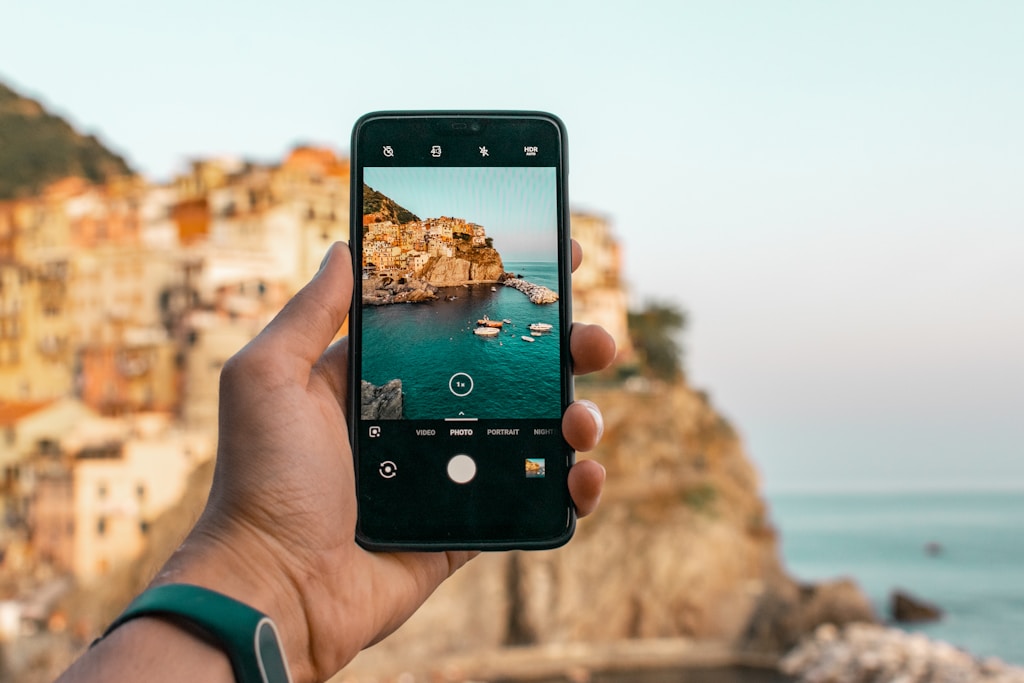
Smartphones have become the main instrument for preserving life’s priceless moments in the current digital era. Smartphones are now as capable as professional cameras thanks to developments in photography technology. Improving your smartphone photography skills may turn your photos from simple snapshots to spectacular works of art, whether you’re using them to record family get-togethers, take pictures of breathtaking views, or just share events on social media.
Understanding the subtle aspects of lighting, composition, and editing is essential to smartphone photography; it goes beyond simply pointing and shooting. You may improve your smartphone photography experience and create visually striking and emotionally powerful photos by becoming proficient with these features. Here are some helpful techniques for improving your smartphone photography skills:
Understand Your Camera’s Capabilities.
Start by understanding yourself with your smartphone’s camera settings. Most new smartphones have multiple modes, including Portrait, Food, Macro, and Pro, which allow you to manually modify settings like ISO, exposure correction, and white balance. Understanding these features will allow you to optimize your photographs for different scenarios.Master Lighting.
Lighting is crucial in photography. Whenever possible, use natural light. Early morning or late afternoon, known as the “golden hour,” provides soft, flattering light ideal for capturing vibrant colors and textures. If shooting indoors, opt for indirect light sources like lamps to avoid harsh shadows.Composition is Key.
A well-composed picture can elevate an ordinary image to the spectacular level. The rule of thirds, leading lines, and negative space are all techniques that can help you create depth and visual appeal in your photos. Grid lines in your camera app might help you arrange your subjects based on these principles.Focus and Exposure Control.
Tap the screen to ensure your subject is in sharp focus. Adjust exposure by sliding your finger up or down to balance the brightness and darkness of your scene. This is especially important when working with high-contrast surroundings.Experiment with Angles.
Don’t be scared to explore with various angles. Shooting from a low angle can make your subject appear stronger, whilst a high angle provides a distinct perspective on landscapes and crowds. A skewed angle can make your images more dynamic.Use Editing Tools Wisely.
Smartphones include powerful editing capabilities that can improve your images. Adjust the brightness, contrast, and saturation to improve the overall appearance. Some of the best photo editing apps for iOS and Android are Snapseed, Adobe Photoshop Express, Pixlr, and PicsArt. These programs include complex capabilities such as RAW picture editing, filters, and retouching tools to help you modify your photos.Keep the Lens Clean.
A clean lens is necessary for taking clear photographs. To avoid smudges and maintain clean photographs, wipe your camera lens on a regular basis using a soft cloth.Practice and Experiment.
The most effective approach to improve is through practice. Take several photographs and study them to determine what works and what does not. Experiment with various settings and techniques to create your own distinctive style.Additional Accessories.
Consider purchasing equipment such as tripods, lenses, or extra lighting to increase your smartphone’s capabilities. These tools can help you steady your images, add depth, and boost low-light performance.Stay Current with Technology.
Finally, keep up with the latest smartphone models and technology. Upgrading to a better camera can dramatically enhance your photographic experience by providing capabilities such as optical zoom, greater low-light performance, and sophisticated shooting modes.Capture in RAW.
If your smartphone supports it, shoot photographs in RAW format. This increases post-processing versatility, allowing you to more efficiently modify settings such as exposure and white balance.Use Burst Mode.
Use burst mode to capture subjects or moments that are moving quickly. This tool lets you snap many images in quick succession, boosting your chances of capturing the right shot.Pay Attention to the Background.
Ensure that your background complements your subject. A busy or distracting background might reduce the effect of your photograph. Use a short depth of field or relocate your subject to a cleaner setting if possible.Shoot in HDR.
High Dynamic Range (HDR) balances bright and dark portions in your scene, producing more natural-looking photographs. When shooting landscapes or high-contrast images, enable HDR mode.Take Advantage of Night Mode.
If your smartphone has a Night Mode, utilize it to improve low-light photography. This feature often incorporates extended exposure times and noise reduction algorithms to provide crisper photographs in low-light circumstances.
To summarize, mastering smartphone photography requires a combination of understanding your device’s capabilities, trying with various ways, and honing your editing skills. By adopting these suggestions into your photography practice, you’ll be well on your way to creating great photographs that reflect your distinct perspective and style. Remember that constant practice and a willingness to try new techniques and instruments are essential for growth. As you improve your skills, you’ll discover that smartphone photography not only improves your visual storytelling, but also serves as a fun and creative outlet. Whether you’re capturing regular moments or documenting major events, the ability to create high-quality photographs with only a smartphone is both empowering and rewarding. So keep snapping, experimenting, and pushing the limits of your smartphone camera’s capabilities!